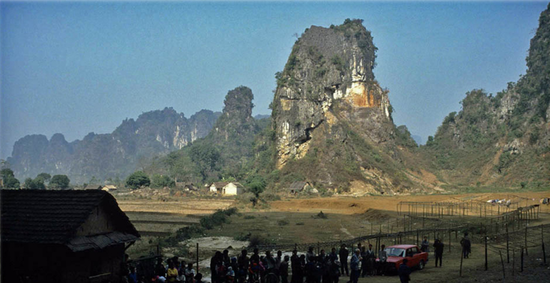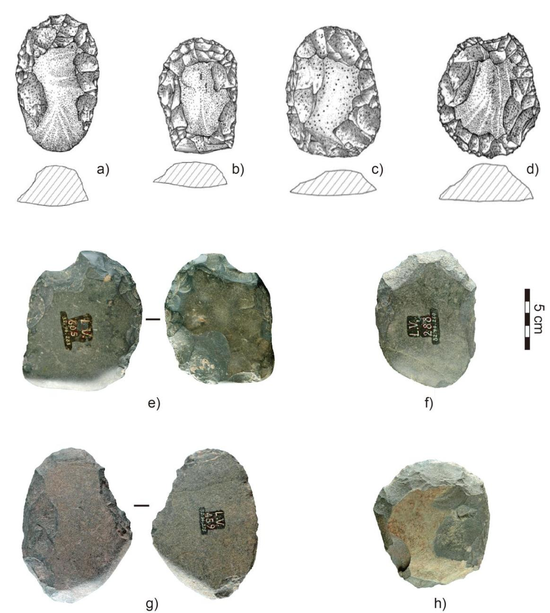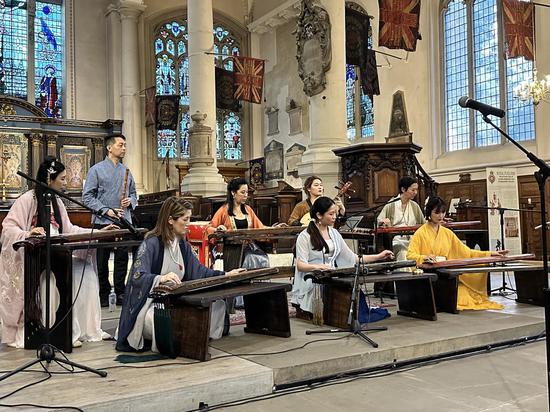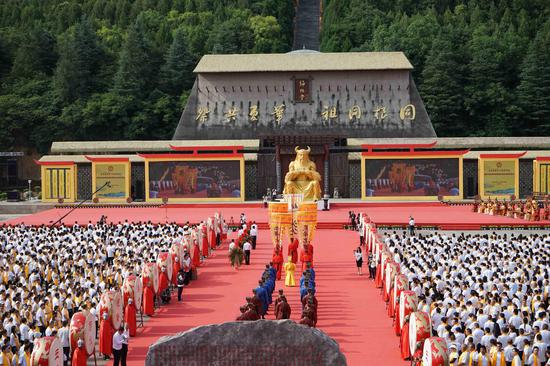By Zhou Yuduan, Associate Professor, School of History, Archaeological Institute for Yangtze Civilization, Wuhan University

What is the "Hoabinhian Culture"?
In the 1920s, European scholars, represented by the French archaeologist Madeleine Colani, explored more than 60 cave and rock shelter sites in Hoa Binh Province in northern Vietnam, where they obtained lithic assemblages characterized by unifacially knapped cobble tools. The lithic assemblages, then, were named as "Hoabinhain Culture" by Colani at the First Congress of Prehistorians of the Far East held in Hanoi, Vietnam, in early 1932 (the "Hoabinhian Culture" will not be put in quotation marks hereafter).
In early studies, the Hoabinhian lithic assemblage was thought to include different types of tools, characterized by the "Sumatraliths", which were made by unifacial knapping at the circumferential of cobbles and pebbles. This tool type is easily recognizable by researchers due to its relative stability in morphology. Using this tool as an "index fossil", Hoabinhian sites were subsequently discovered throughout mainland Southeast Asia and its surrounding areas. By the end of the 20th century, the number of Hoabinhian sites had exceeded 200, with a spatial distribution ranging from Vietnam, Laos, Thailand and Myanmar in the north to the vicinity of the island of Sumatra in the south, mainly situated in the tropical rainforests. The Hoabinhian sites in Southeast Asia are about 4,000-30,000 years old, of which the earliest sites are located in northern Vietnam. Therefore, many scholars believe that the karst mountainous region in northern Vietnam is where the Hoabinhian originated and spread to other countries.

With the intervention of new research methods, the Hoabinhian has been redefined as researchers are focusing more on the diversity of the operative schemes of tool production rather than on a particular tool type (i.e., Sumatralith). It is now understood as a phenomenon of unifacial technology in and around mainland Southeast Asia from the Late Pleistocene to the mid-Holocene. The Hoabinhian lithic assemblages include not only "Sumatraliths" but also various types of chopper-chopping tools and flake tools, which present diversity in different tempo-spatial contexts. In addition to lithic tools, there were also a large number of ligneous tools, including bamboo and wood tools, which were virtually impossible to survive over thousands of years.
What is the scientific significance of the discovery of the Hoabinhian sites in southern China?
In the past decade, a number of Hoabinhian sites have also been discovered in Yunnan and Guangxi of southwestern China near mainland Southeast Asia. For example, the Hoabinhian assemblages at Xiaodong Rockshelter (Lincang City, Yunnan Province) were dated from about 45,000-23,000 years ago, representing the earliest known Hoabinhian site in Asia; the Hoabinhian lithic assemblage from Dedan Cave (Lincang City, Yunnan Province) was dated to about 20,000-18,000 years ago, demonstrating the successive development of the Hoabinhian Culture in Yunnan; and the Guomo site in Guangxi, which dates from about 15,000-12,000 years ago, may illustrate the diversity of the Hoabinhian Culture.
The discovery of these Hoabinhian sites in southern China has once again expanded the spatial and temporal distribution of the Hoabinhian Culture. The Hoabinhian Culture, a former Southeast Asian archaeological issue, then became a Chinese-Southeast Asian prehistoric topic and the first named Paleolithic culture in China, which was widely recognized by the international academic community. Moreover, the discovery of the Xiaodong Rockshelter site is undoubtedly one of the most significant breakthroughs in studying the Hoabinhian Culture in the past hundred years and has epoch-making academic significance. A direct connection between the Paleolithic cultures of South China and Southeast Asia, which may involve migrations and cultural exchanges of hominins, was established. On the other hand, the discovery and study of the Hoabinhian site in South China have also enabled Chinese scholars to participate in the in-depth study of the subject.

Why could the Hoabinhian represent the climax of the development of the local cobble-tool culture in East and Southeast Asia?
The Hoabinhian is a techno-culture created and inherited by the Homo sapiens sapiens in East and Southeast Asia during the final Late Pleistocene; it witnessed the last developmental stage of the "cobble-tool culture" and might represent the developmental climax of the cobble tool technology in the area. It is significant for understanding the "cobble tradition" of Paleolithic China. The lithic assemblages of southern China and Southeast Asia were often called the "chopper-chopping tool tradition " or "cobble-tool industry", lasting nearly 2.5 million years. With the advent of the Hoabinhian Culture, although the tools were still made of cobbles, the production schemes and tool structure changed significantly. In this regard, tool blanks' structural constraints were released. Take the "Sumatraliths" and split-cobbles as examples: the former became prehistoric "Swiss Army Knives" by shaping more than one cutting edge at the circumference of the cobble, while the latter could produce almost any tool type (and even hafted tools) based on half-cobbles. These two production schemes resolved the problem of the structural constraints of cobbles. The Hoabinhian Culture is relatively open on production strategy. At the same time, other contemporary technical phenomena, such as the Sonvian Culture, are more closed in production possibilities and potentials. And this may explain why the Hoabinhian lithic system is so diverse and varied on different technological levels. During the post-Hoabinhian period, the Hoabinhian technical heritage could be widely found in southern China and Southeast Asia.
So, from a perspective based on the logic of technology evolution, the Hoabinhian lithic production could represent the developmental climax of the cobble tool tradition in East Asia. Tools will become hafted which is a global trend since the Middle-Late Paleolithic periods (rather than miniaturization—which could also be interpreted as becoming hafted or composited), and this may have laid the technological foundation for Neolithic axes, adzes, chisels, and other hafted tools. The above reflects that the ancient humans of that time were very clever, not only in adopting the production strategy of stone tools based on local conditions but also in maximizing the technical potential of cobble. This ability and cognition are difficult for the Homo erectus in the same region to achieve, and it is also an essential manifestation of the "behavioral modernity" of the Hoabinhian hunter-gatherers. In this way, the Hoabinhian Culture is also a "key" to understanding the cobble traditions of East and Southeast Asia.
What kind of oriental civilization "genes" does the Hoabinhian Culture carry?
It is generally recognized in the academic community that there are distinct techno-cultural traditions between the East and the West during the Paleolithic. Characterized by a "simple" core-flake technology in northern China, and a "chopper-chopping tool tradition" in southern China (although these terms have been criticized), the East belongs to a different technological world. However, by the Middle-Late Paleolithic, new technological elements, such as Levallois and blade technologies, had emerged in northern China due to the influence from western Eurasia, while there seems to have no significant changes in the south, making it difficult to draw a generalized Late Paleolithic phase. Therefore, compared with the north, which was influenced by Western technologies, cultures, and populations about 40-50 thousand years ago, the south may better represent the "indigenousness", "continuity", and "creativity" of East Asian cultural development. The Hoabinhian Culture is an outstanding representative of this.
However, the Hoabinhian Culture did not only have stone tools. Research suggests that it was more likely a "bamboo civilization", with many tools made from bamboo and wood, such as javelins and other hunting tools. Living in the resource-rich tropical forest environment, it is conceivable that humans overcame difficult living conditions with their excellent and flexible stone tool-making skills and steadily lived in harmony with nature for tens of thousands of years. They migrated along the valleys of the Mekong, Red and Salween Rivers, constantly exploring new territories, adapting to new environments and developing new technologies. The "genes" of the oriental civilization such as pioneering, innovation, flexibility, and harmonious coexistence between men and nature can be found in Hoabinhian Culture.
What is the relevance of the study of the Hoabinhian Culture?
The Hoabinhian Culture attests to the longstanding demographic and cultural ties between China and Southeast Asia. It is our common cultural heritage and (pre-)historical memory, and it is also one of the cultural ties that connect the two regions and has injected profound historical and cultural connotations into today's "Belt and Road Initiative " and "China-ASEAN Community of Common Destiny for Mankind". Therefore, the study of the Hoabinhian Culture is of great significance. Compared with the nearly 100-year history of Hoabinhian research in Southeast Asia, Chinese researchers have only just embarked on this topic for a few years. Although our understanding of the Hoabinhian Culture is still very limited, we look forward to its future research's unlimited possibilities.
About the author:
Zhou Yuduan, Associate Professor of the School of History and the Archaeological Institute of Yangtze Civilization of Wuhan University, member of the Professional Committee of Paleolithic Archaeology of the Chinese Archaeological Society, and member of the France-Cambodia and France-Thailand Joint Paleolithic Archaeological Teams. He has a Ph.D. in prehistoric archaeology and graduated from the National Museum of Natural History of France in 2021. His research fields include Paleolithic archaeology and lithic technology. He has published nearly 30 academic papers, and his research results were published in Archaeology (In Chinese), L'Anthropologie, Archaeological Research in Asia, Lithic Technology, Journal of Archaeological Science: Reports, Comptes Rendus Palevol, Quaternary International, etc. Recently, his research interest includes the Hoabinhian Culture and contemporaneous techno-cultural phenomena in South China and Southeast Asia.


















































 京公网安备 11010202009201号
京公网安备 11010202009201号